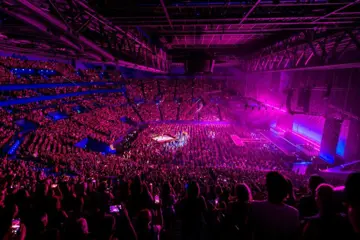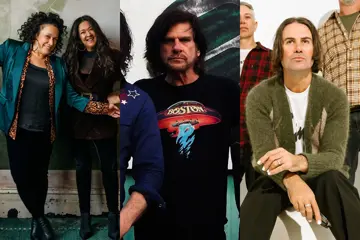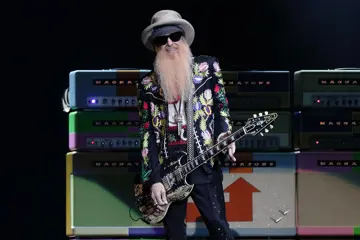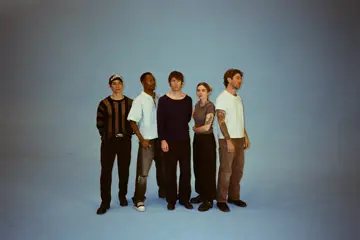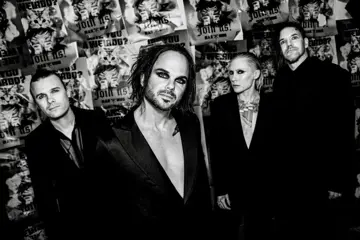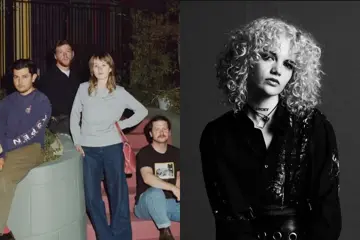CONTENT WARNING: This article contains discussion of mental health. If you are suffering from any of the issues that have been discussed or need assistance, please contact Lifeline on 13 11 14 or Beyond Blue on 1300 22 4636.
Ursula Yovich’s Man With The Iron Neck is brave, captivating storytelling. It is a story of survival in the face of hopelessness, of transformation in defiance of paralysis.
This play is a simple tale told exceptionally well thanks to Gavin Robins' and Josh Bond’s outstanding direction. Set in a small Australian community out bush, the narrative traces the lives of a close-knit First Nations family – twins Bear (Kyle Shillings) and Evelyn (Caleena Sansbury), their mother Rose (Ursula Yovich) and Evelyn’s boyfriend Ash (Tibian Wyles). The children entertain dreams of sporting glory and adventuring across the globe before their world is rocked by another suicide, plunging the family back into the chokehold of trauma, which has been simmering beneath the surface. Ash becomes fixated with an early 20th century stuntman, 'The Man With The Iron Neck’, before appreciating that even he could not evade death forever.
Yovich’s writing is sharp and nuanced performances by the cast carry the heavy subject matter with dignity and sensitivity. The playful scenes with the jeering kids hit the mark, dusting the play with the lightness and warmth the narrative needs to counter all the darkness and despair.
The physicality of the cast is remarkable. The aerial performances are a genuine joy to watch, the twirling twins in utero a particular highlight. There is a pointed emphasis on physicality throughout the performance, the now empty space making the abrupt suicide all the more keenly felt. The suspended bodies we see on stage urge us to consider the threads between family, intergenerational trauma, colonialism and racism. The hanging, immobilised figures make us contemplate how moving on can seem like an impossibility in the face of severe trauma.
Don't miss a beat with our FREE daily newsletter
Joey Ruigrok’s set and Sam James’ videography is a match made in heaven. We are transported to anl Australian home in a small community through the gorgeous images of bushland. The clever transformation of the hills hoist into a web/cage/target further adds to the feeling of sudden estrangement from the safe and familiar, even when we are in our own backyard. The descent into the hyperreal aided by Matt Marshall’s lighting design captures the state of inner turmoil as the characters reckon with their intense grief.
In theatre, we are asked to suspend our disbelief and ignore the reality of watching a staged performance. Yovich and Bond’s Man With The Iron Neck is so heartbreaking because we only have to suspend our disbelief so far. In 2019, First Nations youth suicide is at a crisis level. The regions of Litchfield and Katherine have some of the highest suicide rates in the country. Adam Goodes is still in the spotlight responding to the racism he experienced in his final seasons at the Sydney Swans, four years ago.
Theatre such as this is so important as it demands we emotionally connect. While statistics can lose meaning, this play cuts through the numbers and requires us to engage with the devastation. We know that death by suicide is but one manifestation of the continued effect of colonialism and dispossession on Australia’s First Nations people. Man With The Iron Neck unapologetically ask us to face up to our nation’s dark history as we walk together towards a path of healing and reconciliation.


